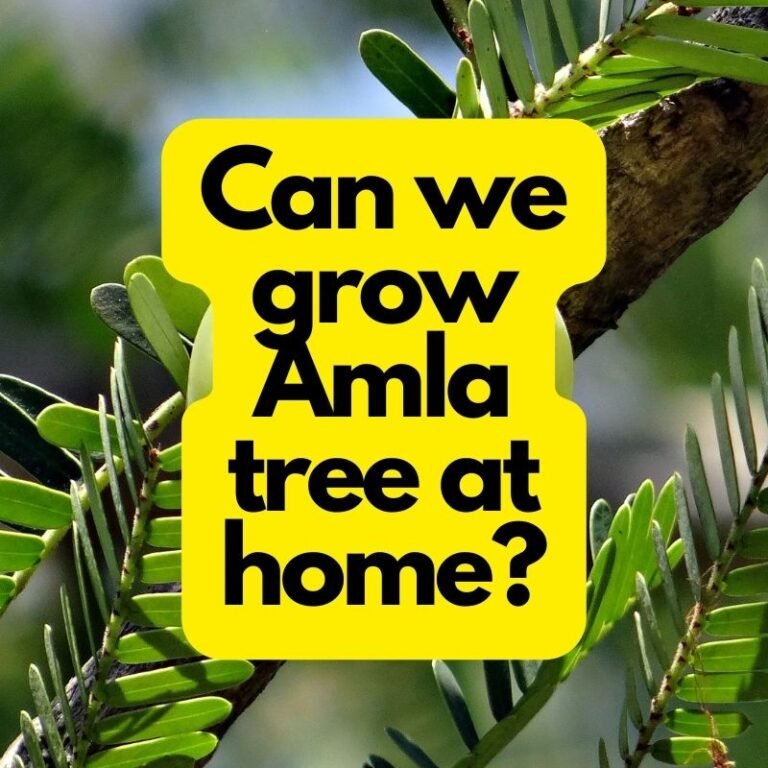Botanical garden
A botanical garden also called a botanic garden, is a collection of living plants primarily designed to depict relationships within plant groups. In modern times, most botanical gardens are primarily concerned with displaying ornamental plants, as far as possible in a scheme that emphasizes natural relationships.


Thus, the two functions are mixed: eye appeal and classification system. Plants that were once of medicinal value and extremely important in early botanical gardens are now mainly of historical interest and not particularly represented in contemporary collections.
A demonstration garden that focuses on woody plants (shrubs and trees) is often referred to as a plantation. It can be a collection in itself or a part of a botanical garden. A major contemporary objective of the botanical garden is to maintain an extensive collection of plants, labeled with common and scientific names and regions of origin.

The collection of plants in such gardens varies from a few hundred to several thousand different types depending on the available land area and the financial and scholarly resources of the institution.
As the world population becomes more urbanized, botanical gardens are recognized as one of the important cultural resources of industrialized nations. Botanical gardens provide city dwellers with that part of the natural environment that they no longer have access to; In addition, they offer a mental escape from population pressure and suggest new interests and hobbies related to the natural world. The roots of what can be said to be the botanical garden as an institution can be traced to ancient China and the many countries bordering the Mediterranean.
These were in fact often centers of growing fruit trees, vegetables, and herbs, and the herbs used for food and the raw medicines of the time. After the discovery of printing, manuscripts on plants, which had existed for centuries, became more widely disseminated, and these inspired the further publication of descriptive works called Herbs. Herbs and their herbs, in turn, inspired the founding of the botanical garden. There were five such gardens in Europe by the end of the 16th century, and several hundred by the middle of the 20th century.

The first two were in Italy at Pisa (1543) and Padua (1545). Previously, such gardens were associated with the medical schools of universities. Professors of medicine were primarily botanists of the time, and their “physical gardens” served to train students as well as to grow plants to make medicine.
But he served in other ways as well. For example, Carolus Clusius, a famous 16th-century botanist, brought an extensive collection of flowering bulbs to the Botanic Gardens in Leiden, Netherlands, which proved to be the beginning of the Dutch bulb industry.
Botanical gardens and plantations differ from parks in that they are generally determined according to the scientific relationship of their plant collections, especially for landscape effects or playgrounds or other essentially recreational endeavors.
For example, the traditional practice of laying a botanical garden is to gather trees and shrubs together in a plantation section of the garden. Often, however, trees and shrubs are used throughout the garden, in their respective taxonomic groups, along with herb collections, to enhance landscape effects.

Botanical gardens, or parts of them, are sometimes planned according to the geographical origin of the plants. Sometimes the layout is based on smaller, specialized gardens within the larger garden, such as rose, iris, rock, wildflower, and Japanese landscape gardens. Botanical gardens can range in size from a few hectares to 1,000.

Before you start digging, consider carefully what you really want from the garden. You will soon discover that an average-sized garden cannot easily meet the requirements for a Botanical Garden
The primary role of a botanical garden is to focus on providing a plant collection with some scientific basis. These gardens are not designed for the outdoor domestic needs of singles, families, or couples.
Before any design concept, it is important to acknowledge that the look of your garden will be influenced by the more prevalent home garden items such as children’s play equipment, potting shed, household bins, clothesline, etc.
The plant collection should be tailored to the need of the family. If it is the other way around then there is a possibility of the plants getting destroyed and the garden will look completely in disarray.
In general, Botanical Garden is large while home gardens are comparatively small. Creating a successful vegetable garden in a small area is very different from creating one in a large area.
When space is limited it is very important to do more than one thing for each item in the garden, including the plants. A shrub in a small space may need to act as a screen to block out neighbors and add color to a dark corner while providing shade from the summer heat. It is difficult for a plant to meet all these functional requirements as well as can be from only one plant species.
Also, smaller gardens work better with fewer types of plants rather than more. When plants are repeated over and over again, small spaces appear much larger and are more appealing to the eye. A small garden becomes fragmented and appears cluttered when different plants and garden accessories are used.

Still, want a Botanical Garden?
If you still want a vegetable garden it is suggested that you choose a species that can also meet the needs of your family. Be careful with large plants. A small garden cannot withstand the thought of a homeowner for eucalyptus.
The origin of the botanical garden
The origin of botanical gardens lies in the cultivation of plant life in human culture for thousands of years. Agriculture was one of the first major factors for the foundation of cities and civilizations because it allowed people the ability to create their own food sources without hunting or gathering existing food sources. With such reliance on agriculture during the rise and fall of human civilizations, it only became natural that botanical gardens would be created to display the wondrous array of plant species around the world.
The first primitive botanical gardens date back to the 8th century, although the ones we are familiar with in modern times first arose in the 16th century, although these were slightly different and commonly referred to as tropical gardens. Perhaps the first truly modern garden of this type was created by Ulysses Aldrovandi in 1544 at the University of Pisa.
The collection of plants was donated by the eminent botanist who was a former professor at the university. Botanical gardens originated from the research of naturalists and botanists and were usually established by scientific associations of universities. These served as an area of research for many scientists who wished to learn more about plant life and information about species found around the world.
Shortly after their formation, these tropical gardens became a symbol of cultural heritage and scientific prestige. It was during this time that they became the initial research base for genetic studies in the 16th and 17th centuries. Crossbreeding plants in facilities such as the Royal Botanic Gardens, Kew and the Real Jardin Botanico de Madrid attracted many researchers interested in learning more about genetic heredity and the breeding of new plant species. Public gardens became popular throughout England during the 19th and 20th centuries and helped revive popular opinion of gardens.
The United States created its first botanical garden in Philadelphia in 1730 named Bartram Gardens, although the most famous one created in 1859 is called the Missouri Botanic Garden. The scientific uses for this garden were simple and classified plants primarily for the public in the scientific community as well as distributing seeds around the world for consumers. This will lead to another phase of popularity and then a decline. However, over the past few decades, these features have led to another re-emergence in an effort to conserve plant species whose habitat is declining.
Botanical gardens have become an excellent source of plant conservation in recent years as they educate the public and scientific communities alike and raise funds for further plant research. The study of botany is constantly finding new useful ways to use chemicals found in plants for human benefit. Today there are over 1775 botanical gardens spread across 158 different countries around the world. These facilities ultimately help to preserve the beauty of nature in a way that advances the conservation of vulnerable species in danger of extinction.
How to Make Your Yard Look Like a Botanical Garden
A botanical garden is basically a well cared for and well designed (sometimes not even planned) garden which is supposed to be a public space for the whole community to enjoy. Most often you will also see cards with scientific or botanical names of plants, flowers, and trees. The key to creating a vegetable garden in your backyard is determining what these plants and trees would be called in any nursery, getting them, and starting designing! At home, however, you can include the plants you find most appealing and there are no rules that state that you have to have plants that don’t appeal to your tastes.
The most important thing you should keep in mind when creating your own vegetable garden is the use of focal points. There should be a corner, a flower bed, or a wonderful tree that will eventually attract attention. An ornamental flowering tree is a good example of a beautiful focal point and your choice of flowers and shrubs can successfully surround these.
To create that “succulent” and tropical look, you should make sure you include flowering shrubs and trees, and if you have a large backyard, you can create small, interesting focal points with these that complement your look. lead to the main attraction. The use of bamboo adds to the tropical feel and can also be used to make “walls.” Color is important, especially when creating a “botanical garden” effect.
This can be done by combining individual rose bushes and trimming them to the right height to fit the different spaces. Hibiscus flowers, lilies or even gladiolus with their huge blooms add huge and beautiful color to the vegetable garden. When you plant them in heaps or “mass plants,” you can create a magical effect.
Plan ahead and determine where your garden gets the most shade and sunlight. Make sure you plant some flowers and shrubs according to their needs, as you can end up wasting a lot of money replacing plants over and over again. Make sure you also know what the weather does to your garden.
In winter, for example, it’s great to have evergreens and plants that keep their berries so you have color all year round. When it comes to grass, it’s best to use a zebra or pampas (tall grass) to fill in the space or to keep it around. Letting plants and grass grow more freely gives a more natural look.
Don’t let the small yard discourage you, as smaller yards can actually look more casual. Creating a walkway makes a yard look larger and adding a bench among tall plants gives your garden an interesting feel. Not only is it important to think “botanically”, but it is also important to suit the style and climate-appropriate plants, such as the Mediterranean or English country.
A vegetable garden should ultimately be the place where trees, flowers, and shrubs are “grown for exhibition,” and that’s what you should recreate: a beautiful space that puts you and visitors in a good mood.
New York Botanical Gardens
There is no better place in New York City than here to spend the day relaxing among the fragrant flowers of the New York Botanical Garden. One of the most extensive collections in the world, this gem also houses some of the world’s leading plant laboratories. Along with a visit to the nearby Bronx Zoo, the New York Botanical Garden is a great day trip from the island of Manhattan.
The Gardens represents an affordable alternative to some of the most pricey tourist destinations in New York, with an entrance fee of only $6. Public transportation is easy, as both Metro-North and the New York City subway system serve Gardens.
Established in 1891 with funds generated in an expedition by Columbia University botanist Nathaniel Lloyd Britton, the Botanical Gardens are located on the grounds of the former Belmont Estate, once owned by a tobacco magnate. The Garden was declared a National Historic Monument in 1967.
A visitor can spend weeks wandering through the Botanical Garden’s collection. Highlights include a full Japanese rock garden, the perfect place to relax with a book. The trees contained in this part of the park include excellent examples of the Japanese art of bonsai cultivation.
Perhaps the most important part of the park, at least from a historical point of view, is the fifty-acre stretch of woodlands centrally located. These trees are the last remnants of the original woodlands that covered New York City before European colonization. This section uses the site’s natural topography to include the Bronx River with various ridges and hills.
Throughout the year, the Gardens are home to various festivals and shows, with themes as diverse as ancient train exhibitions for the plants of Africa. The Gardens also often host art shows. Seeing the art in these unique settings is an experience not to be missed.
For younger children, the Everett Children’s Adventure Garden is a place to have fun and play amongst larger-than-life flowers. For children ages 2 to 12, this large part of the Garden is an educational way to enjoy the grounds while parents participate in other exhibitions.
It is not widely known that gardens serve a dual purpose. Providing residents and tourists with an urban forest oasis, the gardens are also home to several research institutes. He has a 50,000-volume library of books on botany, one of the largest collections in the world.
The newest of these institutions is the Pfizer Plant Research Laboratory, built with funding from various sponsors, including the pharmaceutical company from which it takes its name. Its primary focus is on genetic research.
Visit the Botanical Gardens as part of your stay in New York City. It is a fun experience as well as the best way to learn something. After all, there’s something to be said for enjoying your own little piece of nature right in the middle of one of the largest metropolises on the planet.
Amazing Gardens From Around The World
Dubai Miracle Garden (UAE)
What we know about Dubai and the Middle East are vast desert lands and a very humid climate. Who would have thought that this place grew the largest garden on record? But, we can always expect opulence and extravagance in Dubai. The magic of Miracle Garden will really transform your love for flowers.
It has over 45 million flower varieties in bright colors and fun shapes. The arrangement of the garden will change every season. You will surely enjoy the assortment of flowers shaped like stars, arches, and hearts.
Brisbane Botanic Garden Mount Coot-tha (Australia)
Mount Coot-tha Brisbane Botanic Gardens, established in the 70s, has become more breathtaking if possible. It consists of several gardens arranged in various themes that bring together gardens from around the world in a 52-hectare area.
Flowers and plants that are unable to grow under the Australian climate are grown inside Tropical Display Domes. Seeing the plant display inside will give you the urge to grow your own and order Brisbane flowers in their gardens online.
Versailles (France)
The Chateau at Versailles is famous in its own right that even Hollywood royalty like Kim Kardashian and Kanye West tied the knot at the luxurious estate. Its gardens remain true to their roots with formal French garden style and design, which took Andre Le Notre 40 years to complete. More than four decades of hard work is worth the timeless beauty of the garden.
Garden fountains, ponds, and capes are the winning features of the garden. It may not have colorful flowers, but it flourishes with attractively cut or cut caps into interesting shapes. A walk around the garden will give you a majestic French feel.
Jardim Botanico de Curitiba (Brazil)
Jardim Botanico de Curitiba points out that love for the country can be expressed through flowers. The Flower Field is a place for scientifically recognized and systematic bloom botanical research that also promotes floral patriotism. Special laws have been made for the protection of the park. Yes, this is so important.
Discover more from Organic Gardening
Subscribe to get the latest posts to your email.







